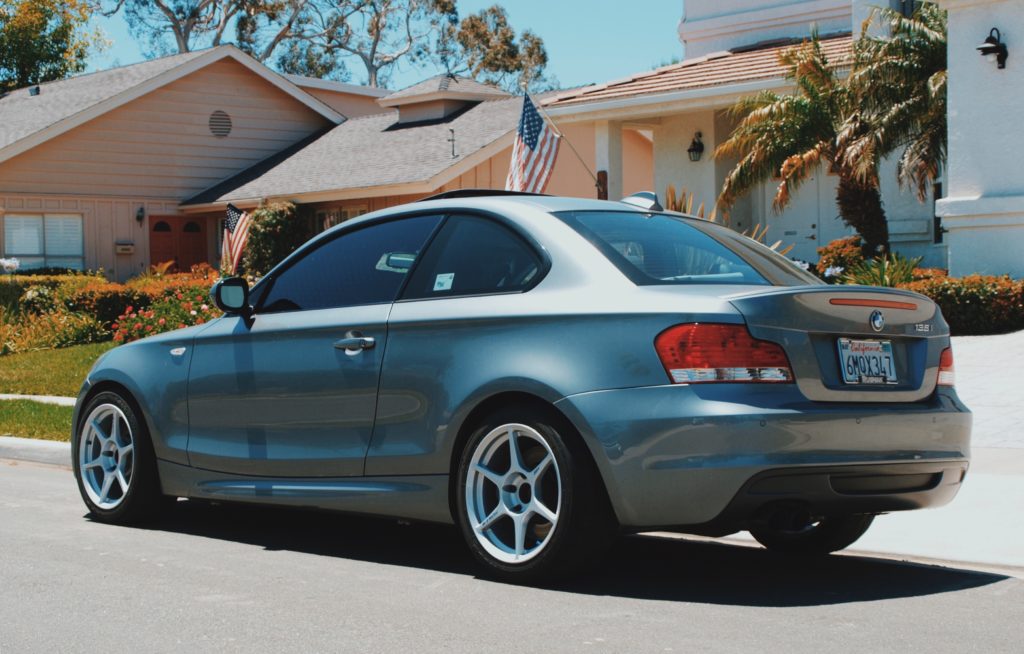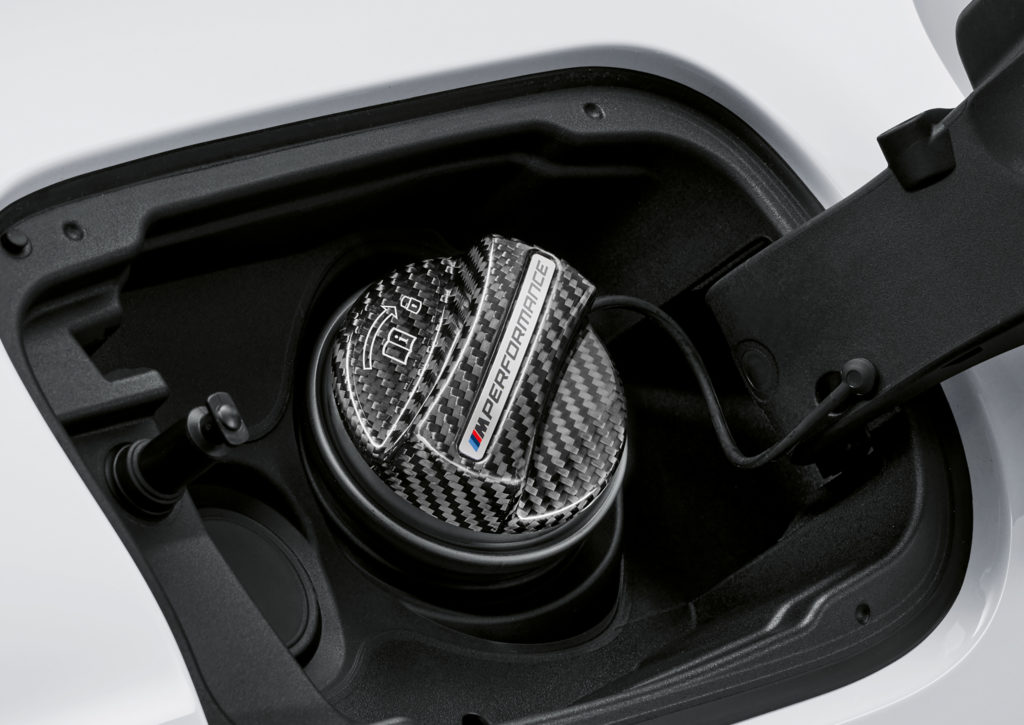Everyone is different when it comes to their tastes, and the automobile may perhaps be the ultimate expression of individuality for those with a penchant for all things mechanical. After one’s been in this game long enough, though, it seems there is a general consensus among how to properly set up a car for a given use. Whether it’s modifying the suspension to correct for factory shortcomings, or something as benign as a different set of wheels that can be swapped over in just a few minutes, many of us feel compelled to do something to our cars.
I’ve got a friend who purchased a brand new car earlier this year. It’s not a BMW, but it is a performance model of a rather ubiquitous commuter sedan. I think it’s excellent, and, having never owned a new car, I took the opportunity to appreciate just how great things can be when they’re fresh and factory-unmodified. No brittle plastics, no previous owner repairs. My friend has owned several widely varied cars over the years, some of which were quite rough and unreliable, so I know he appreciates having something new, with no stories or problems.

I’ll make an exception for Kosei K1s.
However, it wasn’t long until the modifications started, and I couldn’t help but be reminded of my younger self and my 2004 BMW 330i. Although I had owned and modified a handful of other vehicles (and at least one BMW) before my 330i, it was my first car with somewhat respectable driving dynamics that I wanted to make my own. I’ll indulge the details later, but through the course of owning my 2004 330i, I ended up having the car long enough to both add things to it, and to later find myself removing those modifications to return it to its factory state.
In just over six months, my friend has spent a fair bit of change on his new car. He doesn’t regret any of it—yet—but the sum must be approaching enough to have made a dent in the (significantly more expensive) purchase price of the ultimate performance derivative of the model, which wears a big wing. So far, he’s added things that alter both the car’s appearance and it’s driving experience, but nothing irreversible—for now, anyway.
When I owned my 330i, I didn’t wait long to start modifying things, either. I swapped out the amber taillamps for a set with clear turn signal lenses, something I would still likely do straight away to another E46, depending on the color. I also added the ubiquitous angel eyes to the headlights, which was minimally-invasive given that the car was a sedan, with headlights that could actually be taken apart. I added the optional BMW auxiliary port for the stereo, which was incredibly satisfying. I also did black kidney grilles, and eventually modified the suspension.

Fast forward a few years, and I’m in the garage carefully removing those same angel eye LED rings, and re-coding the car’s light control module (LCM) to enable to the daytime running lights. I think I may have swapped the original chrome kidney grilles back in the same day, and before long, I had to have H&R race springs removed and replaced for something more compliant for everyday use from Eibach. Nothing against H&R or the springs, but I now look back and wonder, what I was thinking? It’s the same with kidney grilles. BMW has sold Piano Black and carbon-fiber kidney grilles as Performance and M Performance parts for a long time now, but every time I see them on a model that didn’t originally come with them, the kidney grilles look like black voids to me, and I don’t care for it.

I consider blackout kidney grilles a step too far these days, and it has nothing to do with how large they’ve become.
I’m now on my second 135i, and it would be a lie to say that the car isn’t modified. This time around though, I have a generation’s worth of experience and mistakes behind me, and the path has been slow and appreciative. It took me months before I even got rid of the run-flat tires and replaced them with a sublime set of Michelins. I never got around to having my first 1 Series tuned, but my second one came with the BMW Performance Power Kit, and I loved it so much, that when the Dinan software for my model first went on sale, I had to have it. The car also has an exhaust, but again, this is a genuine BMW (Performance) part, albeit an incredibly obnoxious one. I’ve modified the suspension and replaced the kidney grilles, but I kept the factory springs and paired them with my favorite shocks, and the grilles I used are original equipment for the 135is.
All of these modifications have been performed over the course of years, and at every step, I’ve felt the car has been improved.

Is fitting LCI parts like lights onto a pre-LCI BMW a sin? I don’t think so.
My friend, on the other hand, seems to have progressed beyond the benign, minimally-invasive modification phase, which I admittedly helped steer him through. He’s now asking about downpipes, exhaust systems, intercoolers, charge pipes, tunes, and other warranty-voiding items. Although my assortment of cars have a bit more in the way of power, I never once thought his new car was lacking in terms of performance—especially not while it was so new, anyway. And yet, I find myself explaining the same story about my 330i to my friend.
At one point, I settled on using an anecdote I’d come up with. I told my friend, who’s modified previous cars of his, but never to this extent, and never with such a virgin vehicle, that every modification he spends hard-earned money on him actually costs him in at least two ways. First, there is the cost of the part. We won’t count the sunk costs of putting it on or having it installed by a shop, but they exist nonetheless. Then, down the line, there is the decreased value the market places on modified vehicles. Trying to quantify costs that take the form of decreased reliability or potential failures is difficult, but it too exists.
My friend completely understood what I was saying, and appreciated my seasoned perspective. Later on, however, he was sending me links to cold-air intake systems and downpipes.
I think my 135i is reasonably modified, but being a turbocharged car, there’s something about downpipes, intercoolers, and tunes that crosses a line for me. My 135i is tuned, but that’s because I bought it with BMW software, and then replaced it with the same from another trusted source, Dinan. I’ve had my charge pipe replaced, but that was only because it failed under warranty. The car already came with a front-mounted intercooler, and the last thing I want to do is hack up the plastic up there—and for what tangible gain?

This leads me to my conclusion; are all of these modifications truly necessary? Will my friend someday (perhaps relatively soon) look at his car and think back longingly to the first night he drove it home from the dealership, as I have cautioned?
In some cases, certain modifications are absolutely necessary. Those which correct for shortcomings in the original design often qualify, like changing the shocks on my 135i after getting rid of the run-flat tires only did so much to help the ride. On the same coin though, I definitely over-modified my old 330i, and was thankful I hadn’t done anything permanent when I came to my senses.
When it comes down to it, there’s something to be said for a factory unmodified example of a car. After all, they often sell for the most, but potential future values shouldn’t detract from the ownership experience of today. Lest we forget, every car is built to a cost, and even Satch found a reason to have his Z8 fitted with Alpina suspension bits.
Have you ever over-modified a car, only to find yourself wishing you could have your money, time, and stock car back? I know I have, and when it comes time to buy my next BMW, I’ll be looking for something as close to factory-original as possible.—Alex Tock

Have we gone too far?
[Photos courtesy Alex Tock, BMW AG.]





















